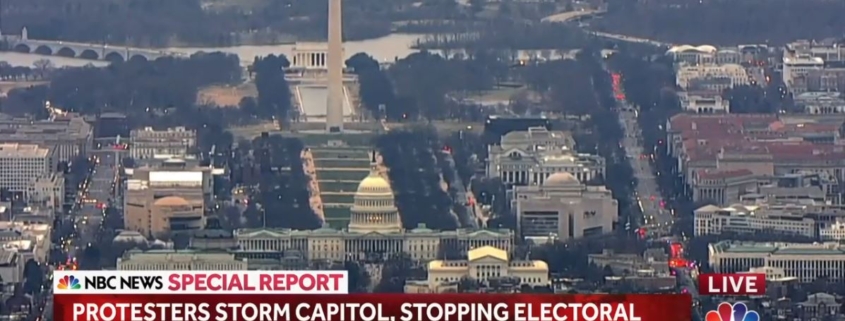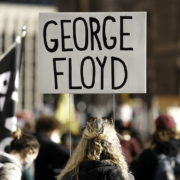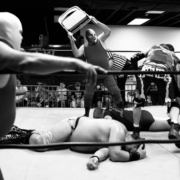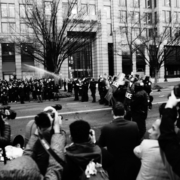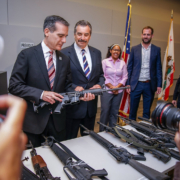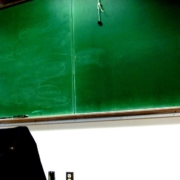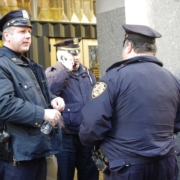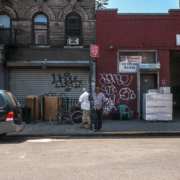What’s wrong with this picture?
By now, most Americans have seen the footage of the large pro-Trump mob who this past Wednesday, at the president’s urging, stormed the Capitol in Washington, DC.
Not only were the Capitol Police deployed in insufficient numbers for effective crowd control, their response appeared weak. One of them is caught on camera talking jovially with the rioters while another one is heard giving directions to legislators’ offices. In some photos and videos, other officers appeared to hold open gates, waving the mob through. Meanwhile congresspeople, staffers, and the news media inside the building were led by police to a safe and secure place.
While the melee was occurring, we were left to wonder how, despite the police presence, were these rioters so easily able to break through the cordon and breach the Capitol? Surely the police knew that this was a possibility? Trump’s rally was not a spontaneous event. It had been planned for weeks, plastered all over social media sites, and a cursory glance of right-wing media clearly demonstrated their objectives and the violent threat they posed.
Where was the coordination with the Metropolitan Police Department of the District of Columbia (MPDC)? Assistance from the DC National Guard? Both were mobilized and deployed in Washington, DC, which is a distinct jurisdiction from the Capitol and the National Mall where the rally was held. Where were the United States Park Police? The Secret Service Police or the numerous other police departments that operate in DC?
Coordination does not seem to have occurred until much later in the melee when control was brought back over the Capitol building.
During the mess and Thursday morning quarterbacking, observers started wondering not only about the sufficiency of police tactics at the scene, the lack of mutual aid directives, but why were so few people arrested during the melee?
In sum, despite their injuries and the death of a Capitol Police officer, the officers who were outside the Capitol could do did little to prevent the hoard from entering the building and rummaging through the chambers and offices.
But one of the most galling takeaways from Wednesday’s event was the dissonance between what we saw at the Capitol and what took place during this past spring and summer during the largely peaceful protests, both in Washington, DC and throughout the country, by mostly African-American protesters against the murder of George Floyd by police officers in Minneapolis.
During these public displays of dissent we saw phalanxes of police, some wearing riot gear, crack down on Black Lives Matter protestors. Police frequently responded with excessive force, rubber bullets, smoke bombs, flash bangs, and teargas. Protestors were injured, beaten, and were arrested en masse. Much of this response was pure and simple an overreaction by the police. In grim irony, the many of the protests against police brutality were met with… police brutality.
Closer to Washington, DC, in June, when law enforcement cleared Lafayette Square ahead of Trump’s bible photo op and afterwards as MPDC police pursued fleeing protestors through the city, 300 people were arrested. 200 of which were done after law enforcement kettled protestors just north of the White House.
In the case of the Capitol breach, perhaps public safety officials were confident that perpetrators would be later arrested based on photo and CCTV evidence. But to the world, it seems like a right-wing mob was easily able to storm the Capitol, threaten law makers, and walk away relatively unharmed.
As selected members of the Republican party try to paint the riotous mob as members of Antifa, one has to wonder if the protesters at yesterday’s melee were African-American would the police have responded so lightly. I think we all know the answer. We have eyes. We’ve seen what law enforcement is capable of.
The uncomfortable truth of the matter is that, despite the presence of African Americans on the Capitol Police Department, one of the reasons why police treated this mob differently has to be racism and white supremacy.
Someone somewhere in the chain of command decided that a rally of Trump supporters who for months have been whipped up in a frenzy against lawmakers of both parties were less of a threat than black and brown people asking to not be murdered and beaten in the streets.
So where do we go from here?
We already know that an investigation is taking place, and both the Chief of the Capitol Police and the Sargent at arms to the Senate floor have quit, but if the recommendations are more hardening of the target, resources, or more training (especially racial sensitivity or awareness), this is insufficient.
It’s not because the Capitol police are underfunded, or poorly trained. We know they have a big budget and adequate weapons. And in terms of sensitivity training, employees, with the assistance of a facilitator, temporarily get in touch with their inner emotions, but then go back to the powerful effects of the organizational culture.
We know that individuals and organizations spouting white supremacy are a threat to our domestic security. The Federal Bureau of Investigation, numerous social justice organizations, and experts, for example, have repeatedly warned us about the recent growth of this kind of activity.
Dissent and political protest are important. They are elements of freedom of expression and bedrocks of our constitution and democracy. But when protests turn violent, appropriate law enforcement actions need to be implemented, and done so without fear or favor. They can’t selectively engage in force, both legal and extra-legal violence dependent on the issues and nature of the perpetrators.
Both the police actions of this spring, summer, and this week should serve as an additional wake up call for a massive and urgent change in American policing, including a serious consideration of defunding the police, and what exactly that means. One that no matter who is in charge of our police, both they and we need to take into account the overt and structural racism in the way that selective police officers can perform their duties.
Photo: Jo Zimny “A Scary Day On Capital Hill”

